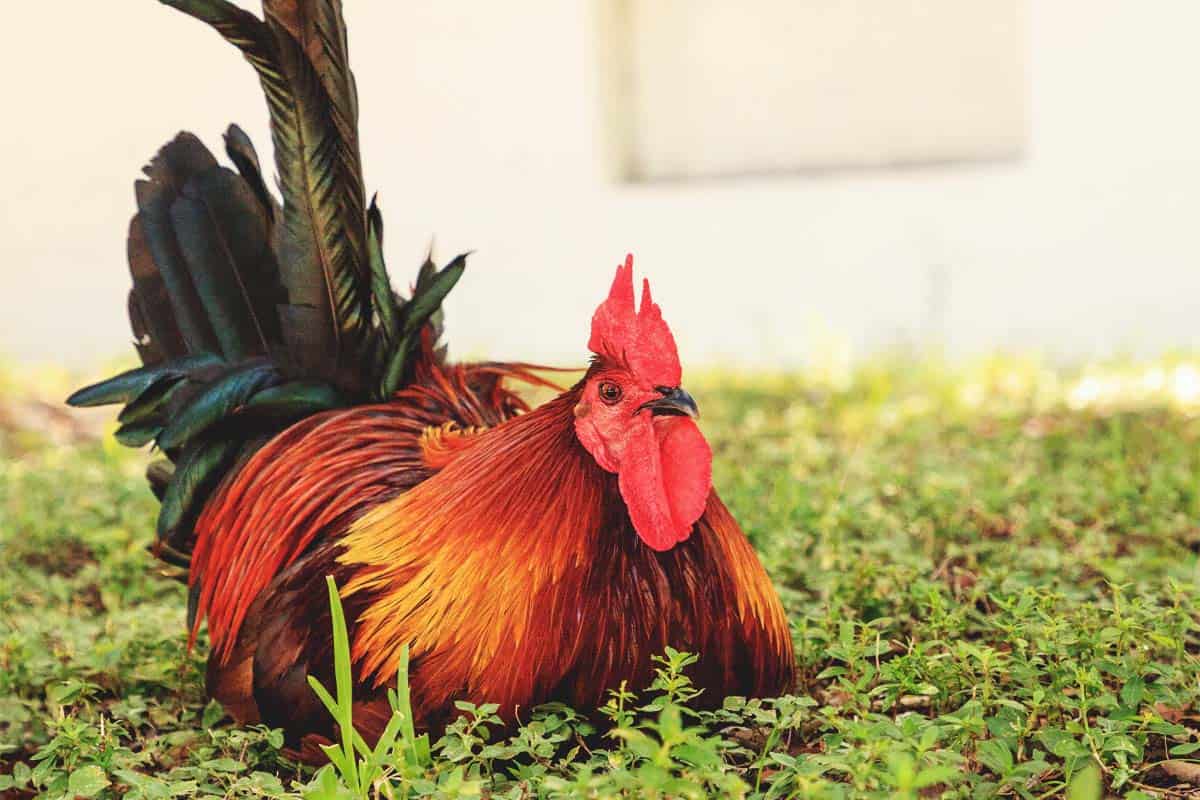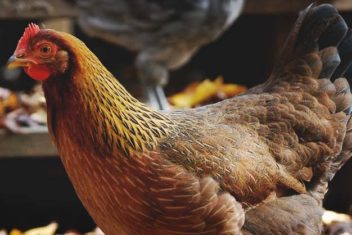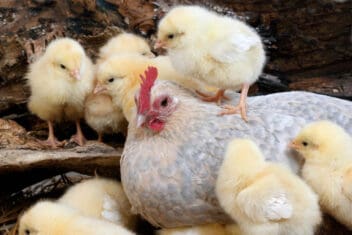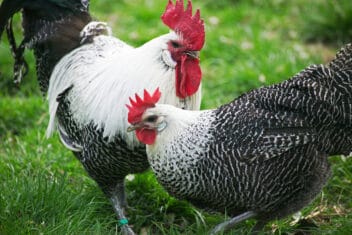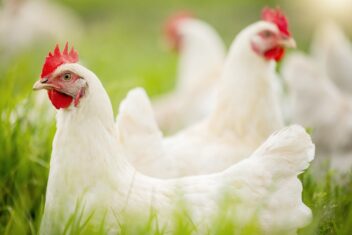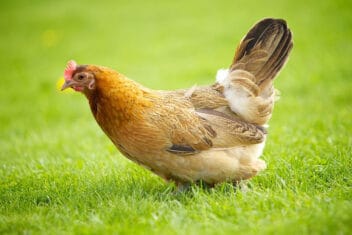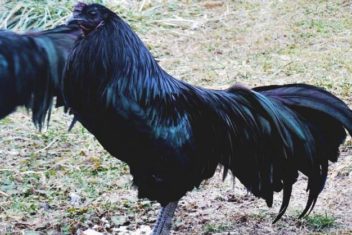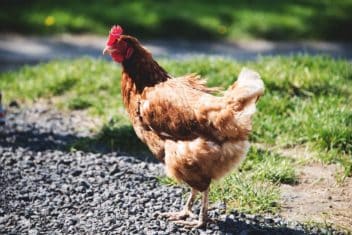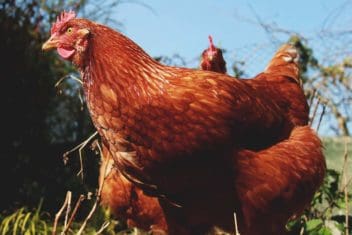If you want a fancy breed from a fancy place, Cubalayas certainly won’t disappoint you! Cubalayas are bred to be an exotic exhibition bird, egg layer, and meat producer. This breed definitely stands out most for their eye-catching exhibition qualities.
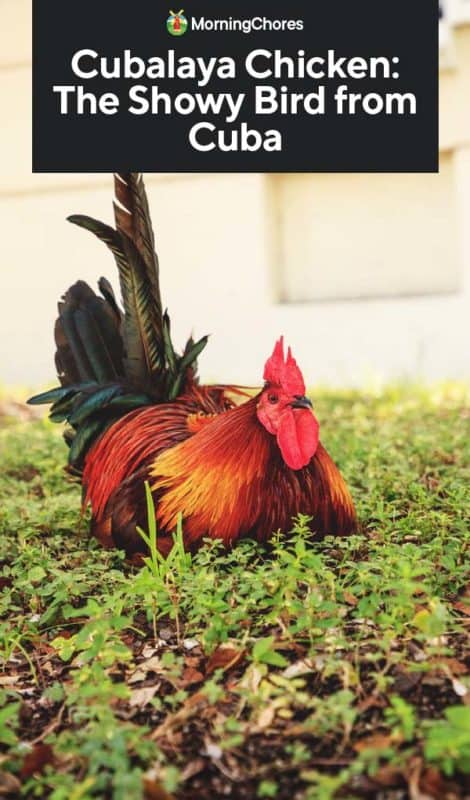
About Cubalaya Chickens
In 1939, the Cuban chicken was introduced to America, where it was widely embraced. Cubalayas is the only breed of chicken bred in Cuba, with Sumatras and Malays being their main ancestors.
There a three different color variations of Cubalayas; the White-, Black-, and Black-breasted-Red Cubalayas.
Cubalaya Chicken Characteristics
1. Size and Weight
Cubalayas aren’t an especially large chicken. Roosters only reach a full-grown weight of 6 pounds. Hens are naturally a bit smaller, weighing in at around 4 pounds.
2. Temperament
Because this bird was originally bred for some cockfighting attributes, Cubalayas won’t be the most docile bird. However, Cubalayas aren’t nearly as bad as some game birds such as Malays. Roosters are the main birds you’ll need to watch out for with aggression; hens are fairly tame and docile.
3. Egg Production
Although this chicken is an exotic breed, Cubalayas actually have good egg production, which is uncommon for ornamental chickens. During their prime egg-laying season, you can expect 4-5 eggs per week from a single hen.
4. Meat Production
While this bird has been used for meat in the past, there are certainly other chickens these days that would suit you better for meat. If you’re after a good, small carcass, consider looking into cornish game hens to better suit your needs.
Taking Care of Cubalayas
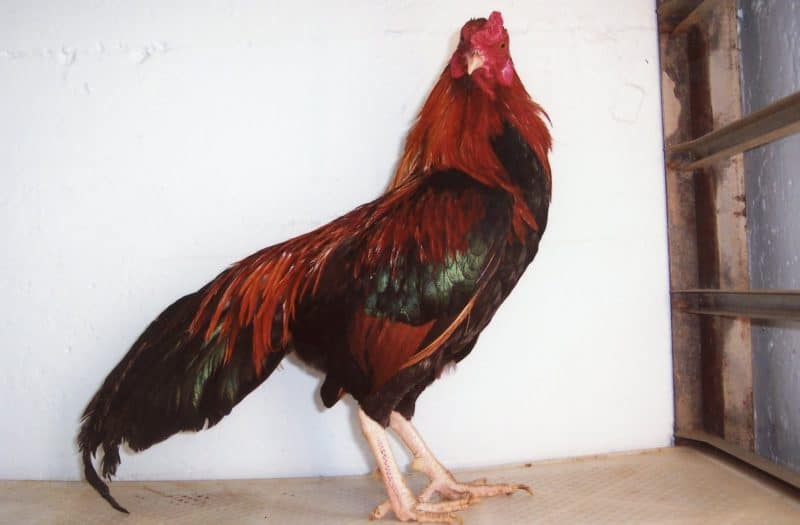
1. Feeding and Nutrition
Your chicks will need to start life with a good quality chick starter to ensure healthy growth. When Cubalayas begin to near adulthood, there are several different ways that they can be fed based on your plans for your birds.
For those planning on keeping Cubalayas as eye-catching egg layers, supply your birds with a laying feed to meet all their egg-production needs. Show birds may need a protein boost for extra shiny feathers, such as unsalted black oil sunflower seeds.
Always cover egg-laying bases from a nutritional standpoint, because regardless of your plans for Cubalayas, hens will lay eggs and you need to make sure they have the proper nutrition to lay eggs and remain healthy. Oyster shell supplements may be necessary if you find yourself frequently collecting weak shelled eggs.
2. Housing and Fencing
Cubalayas will benefit from a decent amount of space, especially since they can tote around some especially large tails.
Inside your coop, provide around 4 square feet per chicken to make sure everyone has adequate spacing. You can provide slightly higher roosts if you prefer roosters to keep their tails out of the dirty bottom of the coop.
Outside, free-ranging will work fine for Cubalayas if you have the space to do so. Confinement in a run is perfectly fine as long as your birds have plenty of space – 10 square feet per chicken is a comfortable amount of room to start with.
3. Health Issues and Care
While every bird can contract a myriad of illnesses, Cubalayas do not have any specific susceptibilities. Keep a close eye on your birds to catch issues before they get out of hand.
Diseases can spread through a flock all too quickly if issues aren’t dealt with quickly. You can look out for things such as runny eyes or nose, lethargy, and lack of appetite to tip you off to the beginnings of sickness.
Internal and external parasites can be a common issue among poultry flocks. Providing your chickens with a good spot for dust bathing can help prevent external parasites like mites and lice.
4. Breeding
The Livestock Conservancy currently has Cubalayas listed as threatened. This means that this breed could use a few good stewards. Some dedicated and passionate breeders would carry Cubalayas a long way towards recovery.
Cubalaya Breed Alternatives
1. Yokohama
The Yokohama chicken shares many similarities with the Cubalaya, making them an excellent alternative if you aren’t quite sure about Cubalayas. Yokohamas are also primarily an ornamental breed, proudly sporting an incredibly long tail.
2. Phoenix
Phoenix chickens are truly breathtaking and not a bird you get to see every day. Similar to the Cubalayas, Phoenix chickens are an ornamental breed that tends to grow unusually long tails.
Fun Facts About Cubalayas
One interesting thing about this breed is their spurs, or lack thereof – depending on the different sources we consulted.
Spurs are predominantly found on roosters. These tend to be what inflicts the most injury when the bird attacks a potential threat.
According to the livestockconservancy.org, Cubalayas are a spurless breed. However, reputable Cubalaya breeders have reported multiple spurs on a single bird. It seems there are lines of Cubalayas with and without spurs, if you are interested in raising a spurless breed. For those interested in a specific trait, you can discuss this with your breeder when purchasing hatching eggs or chicks.
Cubalayas may not be for everyone, but they certainly add an element of beauty and interest to every chicken yard.
